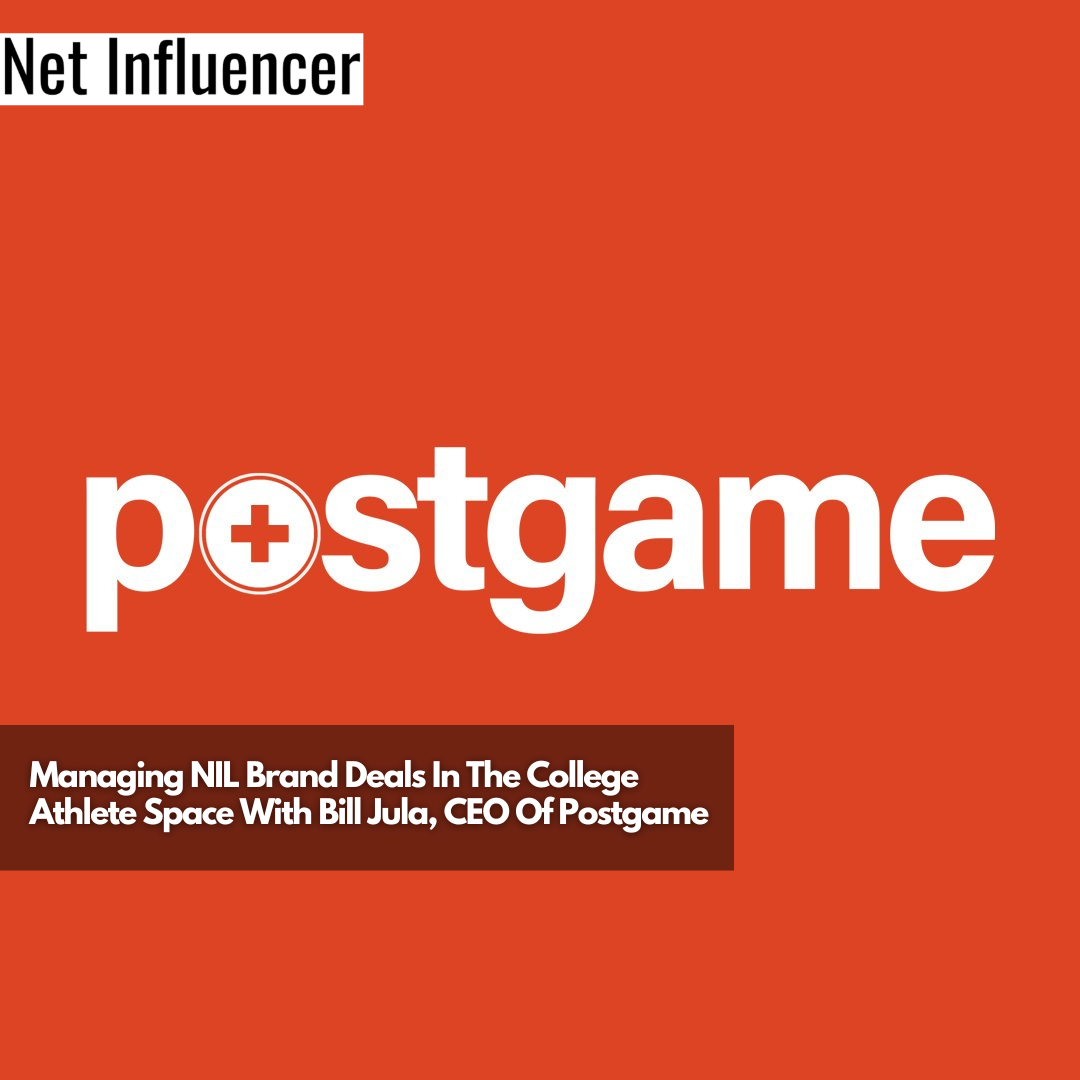Technology
Managing NIL Brand Deals In The College Athlete Space With Bill Jula, CEO Of Postgame
With 2021 changes to NIL laws for college athletes, many college athletes are now using their influence to earn money. Helping them is Postgame, the largest NIL agency providing cutting-edge technology and a white-glove approach to help college athletes excel as influencers.
Located in Sarasota, Florida, Postgame is the largest NIL Agency and is doing more deals with the biggest brands with the most athletes at a vast scale. This agency combines a full-service approach and specialized technology to help college athlete influencers succeed.
Some of the most notable brands with Gen Z audiences they work closely with include Adidas, Urban Outfitters, CeraVe, Crocs, HEYDUDE, McDonald’s, Reebok, Steve Madden, Taco Bell, and more.
The NIL Revolution for College Athletes
In 2021, the Postgame team built an app to help college athletes leverage their influence in anticipation that NIL (Name, Image, Likeness) laws surrounding college athletes would change.
In July 2021, NIL laws for college athletes changed, allowing these athletes to monetize their NIL and use their influence to earn money.

Bill Jula, CEO of Postgame, shares, “We had a couple of brand deals with some major national brands ready to go to provide them [college athletes] with opportunities to promote those brands and earn from their influence during that first year in 2021. I want to say we worked with probably ten companies and got around a thousand athletes paid for using their influence and NIL across social media.”
Using Cryptocurrency as Rewards, Not Payment
In late 2021, the Postgame team launched an NFT marketplace, taking advantage of the huge NFT trend. They are a part of the NIL Crypto Coin, known as “The Official Crypto of College Athletes.”
Bill explains, “It [the crypto market] never really became a huge focus of ours. However, we use NIL Coin as a reward system within the post-game ecosystem. So, when athletes create great content and prove they’re reliable for our brand partners, it’s something we can reward them with.”
Athletes with stores of NIL Coin in their Postgame account can either cash the coins out or use them like reward points to earn free products from some of Postgame’s brand partners.
Bill likens the cryptocurrency as more similar to sky miles earned on a credit card for an airline. It never replaces free products or payments from brands for influencer marketing campaigns, but it is a great bonus.
The Future of Cryptocurrency in College Sports
As for the long-term impact of the NIL Coin on college sports, Bill explains, “ It’s going to depend on the kind of macro view of cryptocurrency and what that becomes. I liken it to the early days of the Internet in the late nineties, where you had thousands or hundreds of different dot coms that were popping up. But, there was only a handful that became household names.”
At this moment, it’s too early to tell what the future of cryptocurrency in college sports will be entirely, but it has a lot of exciting potential.
Bill determines the success of cryptocurrency’s future in college sports based on two factors:
- Is the NIL Coin still being used five years from now?
- Does it have any value? Is the tradable value of the coin worth anything?
He adds, “It [the NIL Coin] can be treated like an investment for athletes where they’re leveraging their NIL, they’re earning that. It’s being stored, and then lo and behold, they might wake up five, ten years from now – if the value of that stuff goes up, then it would’ve been a nice little investment to have made for a couple of social media posts, but again, it’s not a focus right now.”
NIL Brand Deals
Postgame handles campaigns with varying numbers of athletes at once, which can look like campaigns with 15 or 300 athletes at a time.
An interesting part of managing NIL brand deals is how brands use college athlete influencers differently.
Bill shares, “Each campaign is different in how it’s set up and what it’s looking to achieve. Some brands are looking to work with really high-profile athletes primarily. Other brands take on this more scaled approach, which is what Postgame is known for, where we work with what you call tier two or tier three athletes, which may not be household names.”
While tier two or three athletes aren’t household names typically, they are celebrities in their regions, hometowns, and amongst fans. This influence is significant for brands looking to reach a specific area of the country.
The Crocs Campaign
The Postgame x Crocs campaign involved around 500 to 700 athletes over 60 days.
Bill shares that many athletes were high-valued, meaning they typically receive four-figure payments for their influencer marketing campaigns. However, it also involved more minor athletes.
The first step for this campaign was vetting thousands of athletes who wanted to participate in the Crocs campaign to ensure they aligned with the brand.

From there, the Postgame team ordered and sent out the product to all participants with campaign instructions from Crocs.
Lastly, the Postgame team oversaw the payments to ensure that all athletes who fulfilled the campaign’s requirements were paid.
For Crocs, Postgame reported on important analytics about the campaign’s performance, such as how many clicks, orders, and more athletes inspired.
Working with Postgame
Bill shares that Postgame was an outsider in the sports space that nobody had heard about until they burst onto the scene two years ago.
He explains, “We were an outsider coming into this and going up against a few companies that already had relationships with colleges. We kind of took that approach because rather than being beholden to only working with athletes at specific schools, we opened up our world to basically every athlete imaginable.”
Unlike many sports agencies, Postgame works with athletes from all different schools and niches.
Postgame is also unique because it has created and uses specialized technology to help college athletes succeed as influencers. In addition, the Postgame team works closely with athletes to walk them through the influencing process because technology alone can only do so much.
AI Technology in the Sports Influencer Space
Bill believes that while AI technology will naturally affect some things, the Postgame strategy will remain the same.
He explains, “It [AI technology] may streamline a few things. But, I’ll be honest, I think probably 90% of what we do right now in the way we use our tech is probably how, if I were to look up two to three years from now, I would imagine it’ll be very similar.”
However, he does see AI technology impacting how college athletes create content, allowing them to create even higher production value with just their phones.
As for Postgame, Bill shares, “At the end of the day, it’s our belief that what we’re doing is working really well, and we want to stay the course. We’re trying not to chase too many of these headlines… We keep adding employees. It seems like every other week, which is good because the way we do what we do requires human bodies to do it for our brand partners and to continue to scale the way we are.”

















